Cooper Basin source rock atlas
Lisa Hall A , Tehani Palu A , Chris Boreham A , Dianne Edwards A , Tony Hill B , Alison Troup C and Paul Henson AA Geoscience Australia.
B Department of State Development, Government of South Australia.
C Geological Survey of Queensland.
The APPEA Journal 56(2) 594-594 https://doi.org/10.1071/AJ15100
Published: 2016
Abstract
The Australian Petroleum Source Rocks Mapping project is a new study to improve understanding of the petroleum resource potential of Australia’s sedimentary basins. The Permian source rocks of the Cooper Basin, Australia’s premier onshore hydrocarbon-producing province, are the first to be assessed for this project. Quantifying the spatial distribution and petroleum generation potential of these source rocks is critical for understanding both the conventional and unconventional hydrocarbon prospectivity of the basin. Source rock occurrence, thickness, quality and maturity are mapped across the basin, and original source quality maps prior to the onset of generation are calculated. Source rock property mapping results and basin-specific kinetics are integrated with 1D thermal history models and a 3D basin model to create a regional multi-1D petroleum systems model for the basin.
The modelling outputs quantify both the spatial distribution and total maximum hydrocarbon yield for 10 source rocks in the basin. Monte Carlo simulations are used to quantify the uncertainty associated with hydrocarbon yield and to highlight the sensitivity of results to each input parameter. The principal source rocks are the Permian coals and carbonaceous shales of the Gidgealpa Group, with highest potential yields from the Patchawarra Formation coals.
The total generation potential of the Permian section highlights the significance of the basin as a world-class hydrocarbon province. The systematic workflow applied here demonstrates the importance of integrated geochemical and petroleum systems modelling studies as a predictive tool for understanding the petroleum resource potential of Australia’s sedimentary basins.

Lisa Hall is a Senior Research Scientist at Geoscience Australia, within the energy systems group of resources division. Her current research is focused on hydrocarbon prospectivity assessments and petroleum systems modelling in a variety of Australian basins. Lisa holds an MSc in geology and geophysics from Cambridge University (1999) and a DPhil in structural geology and neotectonics from Oxford University (2003). Lisa is a member of PESA. |

Tehani Palu is a geoscientist in the onshore energy systems section in the resources division at Geoscience Australia. She gained her master’s degree from the University of Waikato (New Zealand) in 2009 and joined Geoscience Australia shortly after completing her studies. She has since been involved with various projects including greenhouse gas monitoring for carbon capture and storage, petroleum acreage products in collaboration with the Department of Industry and Science, and petroleum systems modelling. Tehani has been in her present role since 2013, which sees her doing basin analysis and petroleum systems modelling within the energy systems branch. She is a member of PESA. |
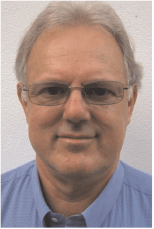
Chris Boreham is a Senior Research Scientist at Geoscience Australia, within the energy systems group of resources division. He obtained his PhD in Inorganic Chemistry at ANU in 1978 and has been working at Geoscience Australia since 1980. Chris is an internationally recognised petroleum geochemist with over three decades of experience in the application of organic geochemistry to the evolution of oil and gas in sedimentary basins. More recently he has extended these geochemical studies to unconventional petroleum (coal seam methane, shale gas and oil). He also leads key aspects of the CO2CRC’s studies on the injection of CO2 into a depleted natural gas field and a saline aquifer. |
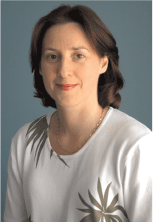
Dianne Edwards is a Senior Research Scientist at Geoscience Australia, within the energy systems group of resources division. Her scientific focus is on defining the petroleum systems of Australia’s petroliferous basins and determining the petroleum prospectivity of unconventional hydrocarbons in the onshore basins. Dianne received her BSc Hons degree in Geology and MSc in organic petrology and organic geochemistry from the University of Newcastle-upon-Tyne, UK. She was awarded her PhD from the University of Adelaide. Dianne is a member of PESA. |
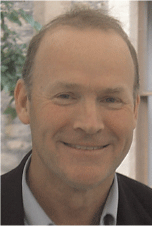
Tony Hill is a Principal Geologist in the energy resources division of the Department of State Development, SA. He graduated with a BSc in applied geology from the Royal Melbourne Institute of Technology in 1980. Tony has over 30 years of experience in petroleum system analysis, and has also worked in the fields of hydrogeology and geothermal energy. He is currently Principal Geologist within the energy resources division of the South Australian Department of State Development. Tony is a member of PESA. |
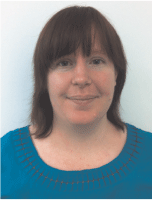
Alison Troup graduated from the University of Queensland with a BSc (Hons) in geology in 2009. She presently works as a geoscientist as part of the Petroleum and Gas group in the Geological Survey of Queensland (GSQ). Since joining the GSQ, she has participated in several regional-scale projects, including the North West Queensland Minerals and Energy Province report, and the Coastal Geothermal Energy Initiative. She is presently involved in the assessment of unconventional resources in Queensland, including the regional assessment of the Toolebuc Formation, examining its unconventional petroleum potential. |
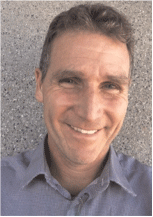
Paul Henson presently manages the Onshore Energy Systems Section within the Energy Systems Group of Geoscience Australia's Resources Division. He graduated from the University of Tasmania, and has extensive experience in the minerals sector, working on mineral systems in Proterozoic and Archaean terranes. Since 2010 he has led the Australian Governments’ onshore carbon storage program, undertaking deep onshore drilling programs in collaboration with the states and industry. Additionally he manages a team researching the hydrocarbon prospectivity of Australian onshore basins. |
References
Boreham, C.J. and Hill, A.J., 1998—Source rock distribution and hydrocarbon geochemistry. Chapter 8, p.129-42 In Gravestock, D.I., Hibburt, J.E., Drexel, J.F., (Eds), Petroleum Geology of South Australia. Cooper Basin, v.4, Department of Primary Industry and Resources. Petroleum Geology of South Australia Series. <https://sarigbasis.pir.sa.gov.au/WebtopEw/ws/samref/sarig1/image/DDD/PGSA004.pdf>Carr, L.K., Korsch, R.J., Palu, T.J. and Reese, B. 2016—Onshore basin inventory: the McArthur, South Nicholson, Georgina, Amadeus, Warburton, Wiso, Galilee and Cooper basins. Record 2016/04, Geoscience Australia, Canberra. <http://dx.doi.org/10.11636/Record.2016.004>
Draper, J.J. (Ed.), 2002—Geology of the Cooper and Eromanga Basins, Queensland. Queensland Government, Natural Resources and Mines, Queensland Mineral and Energy Review Series, DVD.
Hall, L.S., Hill, A.J., Troup, A., Korsch, R., Radke, B., Nicoll, R.S., Palu, T., Wang, L. and Stacey, A., 2015—Cooper Basin architecture and lithofacies: regional hydrocarbon prospectivity of the Cooper Basin, 1. Record 2015/31. Geoscience Australia, Canberra. <http://dx.doi.org/10.11636/Record.2015.031>
Hall, L.S., Boreham, C.J., Edwards, D.S., Palu, T.J., Buckler,T., Hill, A. and Troup, A., 2016a—Cooper Basin source rock geochemistry: regional hydrocarbon prospectivity of the Cooper Basin, 2. Record 2016/06. Geoscience Australia, Canberra. <http://dx.doi.org/10.11636/Record.2016.006>
Hall, L.S., Palu, T.J., Boreham, C.J., Edwards, D.S., Hill, A.J. and Troup, A., In Prep—Cooper Basin petroleum systems: regional hydrocarbon prospectivity of the Cooper Basin, 3. Geoscience Australia, Canberra.
Mahlstedt, N., Di Primio, R., Horsfield, B. and Boreham, C.J., 2015—Multi-component kinetics and late gas potential of selected Cooper Basin source rocks. Record 2015/19, Geoscience Australia, Canberra, <http://dx.doi.org/10.11636/Record. 2015.019>
Goldstein, B., Menpes, S., Hill, A., Wickham, A., Alexander, E., Jarosz, M., Pepicelli, D., Malavazos, M, Staritski, K., Taliangis, P., Coda, J., Hill, D. and Webb, M., 2012—Roadmap for unconventional gas projects in South Australia. South Australia Department for Manufacturing, Innovation, Trade, Resources and Energy, Energy Resources Division, 267 pp. <http://www.statedevelopment.sa.gov.au/resources/unconventional-gas-projects>


